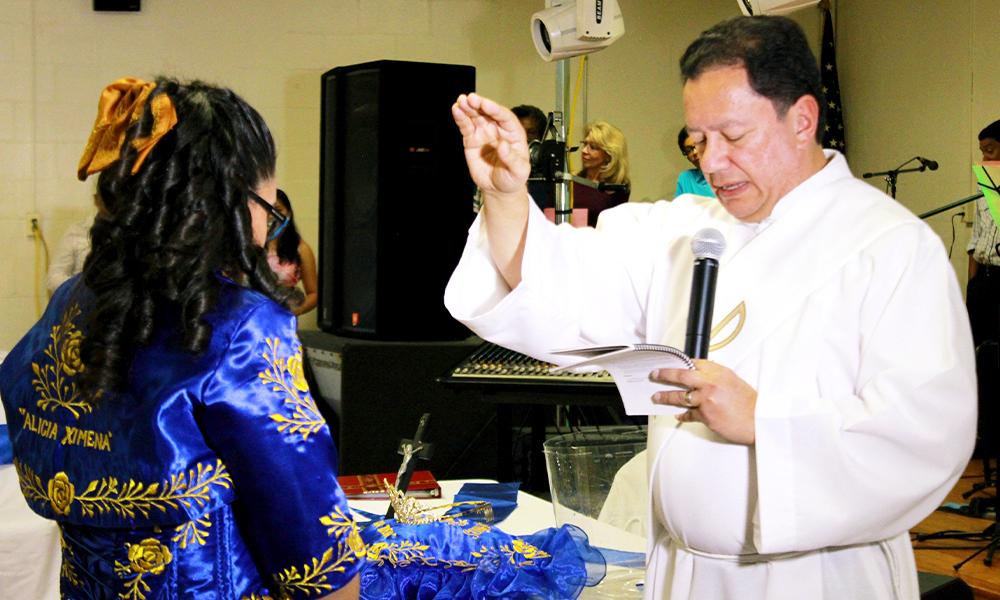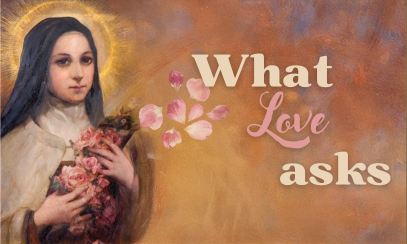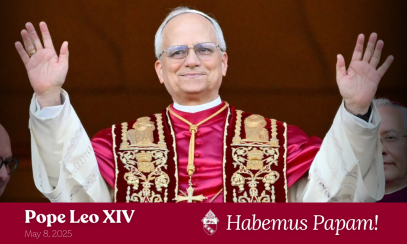
Celebrating Hispanic Heritage Month
When Culture Becomes Catholic
When Culture Becomes Catholic
We have heard many times, especially from Pope Francis, that being a Christian is a way of life. It means that everything we do during ordinary and extraordinary situations must have the Lord as its center. Hispanic/Latino Catholics from different countries fulfill this statement when they present both children and 15-year-old young women for a special blessing during the celebration of a Mass in thanksgiving for having reached a certain age. These events are of great importance in the lives of Hispanic/Latino families who practice the Catholic faith.
We have heard many times, especially from Pope Francis, that being a Christian is a way of life. It means that everything we do during ordinary and extraordinary situations must have the Lord as its center. Hispanic/Latino Catholics from different countries fulfill this statement when they present both children and 15-year-old young women for a special blessing during the celebration of a Mass in thanksgiving for having reached a certain age. These events are of great importance in the lives of Hispanic/Latino families who practice the Catholic faith.
While reading about the subject and talking with people in the parish community, I learned that presenting the children in the Church dates back to 1858-1860, when the War of the Reform took place in Mexico. Back then, for a child to reach 3 years of age was an accomplishment, as the infant mortality rate was high. Over time, parents who practiced the Catholic faith gave extra meaning to this accomplishment and added a special blessing when the child turned 3. It imitated a story about the Virgin Mary found in the apocryphal gospel of the Protoevangelium Jacobi, or Infancy Gospel of James, that describes how she was presented in the Temple by her parents, St. Anne and St. Joachim, at the age of 3. In some other Latin American countries, the presentation is made when a baby is 40 days old, thus imitating the Presentation of the infant Jesus in the Temple (Lk 2:22-23). Mary and Joseph brought Jesus to the Temple to be presented to the Lord, as prescribed by the Law. This practice of merging the social with the religious remains rooted in our cultures. Please note that this special blessing during the presentation is not the same as the Sacrament of Baptism; 3-year-olds are generally already baptized by this time. And, although there are cases of 40-day-old presentations, baptismal godparents and those for the presentation should be the same. This event is strictly the way parents give thanks and hold themselves accountable to God for the gift of their children.
Something similar happens with quinceañeras, the blessing of 15-year-old girls in the Church. It is an adaptation of the amalgamation of rites and cultural customs from the time of the Conquest. In Europe and Mesoamerican tribes, when young women reached a certain age, they were presented in society, since they were considered old enough to have greater responsibilities and ready to start a family. Missionaries Christianized these rituals when they arrived in Mesoamerica. The pagan celebration was taken and given a religious purpose. These days, the quinceañeras are brought to church by their parents, family and godparents to give thanks to God for the gift of life. A girl’s identity as a Catholic is reinforced; her value and role as a woman in the Church are recognized. The priest or deacon gives a special blessing to the young woman, who also renews her baptismal vows. She receives gifts that are blessed during the celebration, and which have a religious meaning. They also have a special meaning for her life of faith, such as the Bible, the rosary and a medal of the Virgin Mary. The young woman carries a bouquet that she offers to the Virgin Mary asking for protection and guidance.
These celebrations in the Church are valuable evangelization tools. Catechetical instruction is necessary for quinceañeras. It includes her parents, godparents and court (young men and women who accompany her). Relatives and friends who partake of and witness the life of faith in action also benefit. The ritual is a powerful message for families and the parish that our lives and cultures should be an ongoing covenant with God and his Church.
Joely Leguizamon is site administrator for the Gloverville Office of Catholic Charities. Email her at joely@charlestondiocese.org.



